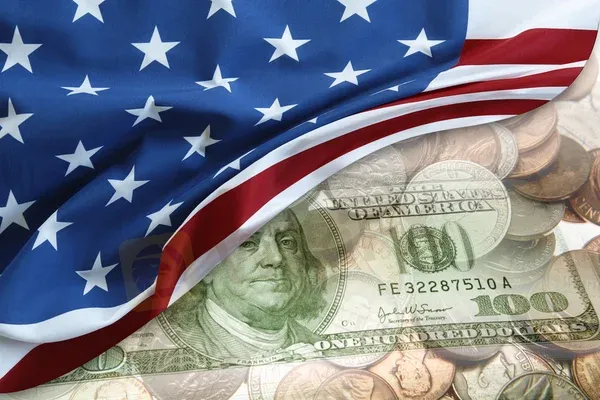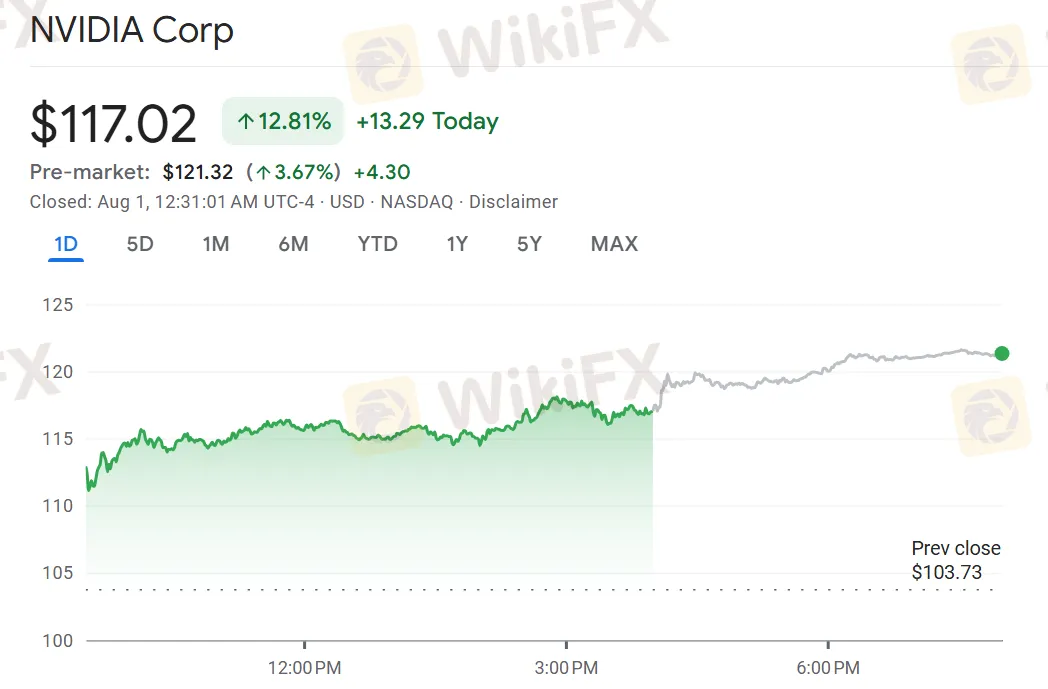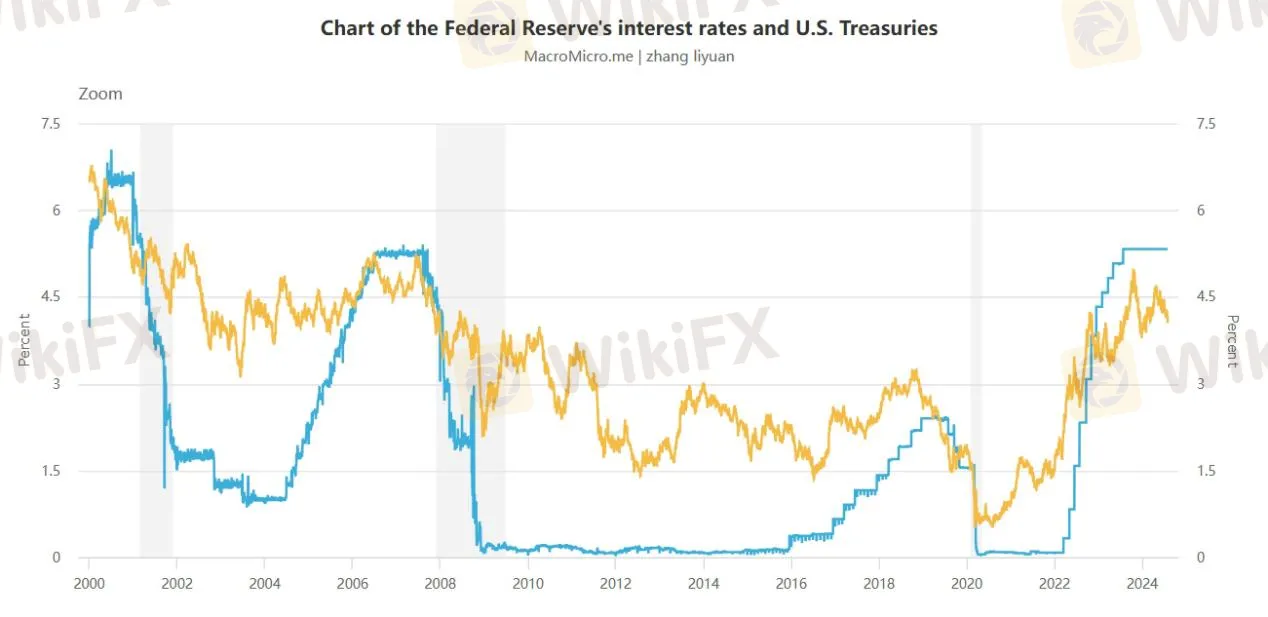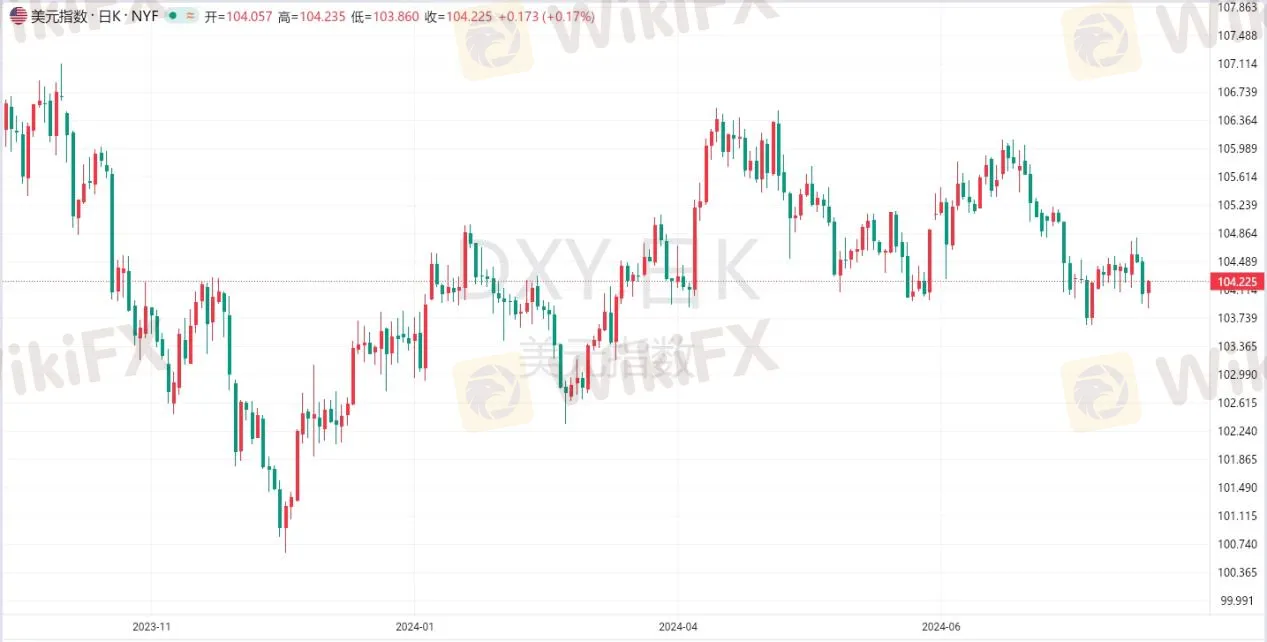简体中文
繁體中文
English
Pусский
日本語
ภาษาไทย
Tiếng Việt
Bahasa Indonesia
Español
हिन्दी
Filippiiniläinen
Français
Deutsch
Português
Türkçe
한국어
العربية
【MACRO Insight】US Stock Market Starts Positively! How Does the Federal Reserve's Policy Decision Affect Investment Trends?
Sommario:The Federal Reserve maintained interest rates unchanged in the latest policy resolution and closely monitored the labor market and inflation to guide future monetary policy. Although there are differences in the market's expectations for an interest rate cut in the short term, Federal Reserve Chairman Powell emphasized the resilience of the labor market and the commitment to the inflation target, indicating that in achieving the dual mission of maximizing employment and stabilizing prices, the F

The US stock market showed a positive trend at the opening, with all three major indices on the rise. Specifically, the Nasdaq Composite Index rose by 2.42%, the S&P 500 Index increased by 1.58%, and the Dow Jones Industrial Average climbed by 0.42%. Notably, Nvidia's stock price rebounded significantly, surging by more than 11% to $115.27, with its market value reaching $2.81 trillion, a single-day increase of nearly 1.9 trillion yuan. Morgan Stanley's research report indicated that despite Nvidia's recent stock price being affected by market selling, it believes this presents a good opportunity for investors to enter the market, thus upgrading its stock rating to “overweight” with a target price maintained at $144.
However, Nvidia's stock price fell by more than 7% the previous trading day, with a market value loss of $193 billion. The market's skepticism about the returns on artificial intelligence led to investors withdrawing funds, affecting tech giants such as Nvidia, Apple, Microsoft, and Alphabet. Nevertheless, Nvidia faces unfavorable factors including: Google and Microsoft's AI revenue not meeting expectations, and strong competition from rivals like AMD. But according to FactSet data, Nvidia is expected to have the fastest profit growth among S&P 500 constituents, with second-quarter net income expected to increase by 140% year-on-year to $15 billion. Analysts generally predict that Nvidia's stock price has about a 30% increase potential, and the company will announce its second-quarter financial report on August 28th.
In addition to Nvidia, other tech companies such as Broadcom, ASML, Micron Technology, AMD, TSMC, and Qualcomm also performed well, with stock prices rising. Gold stocks were equally strong, with increases of over 6% for Gold Fields and AngloGold, over 5% for Harmony Gold, and over 4% for Cordonnier Mining. Chinese concept stocks also rose broadly, with Bilibili, Li Auto, and Pinduoduo increasing by more than 4%, and XPeng Motors by over 3%.

All this is closely related to the Federal Reserve's expected conclusion of its two-day policy meeting on Wednesday and the announcement of related decisions. The market generally expected the Federal Reserve to keep interest rates unchanged, while also paying attention to whether Federal Reserve Chairman Powell would send signals or hints about possible future interest rate cuts. As expected, the Federal Reserve maintained the federal funds rate target range at 5.25%-5.50% for the eighth consecutive time in its latest interest rate decision, a decision that met market expectations.
In the new policy statement, Federal Reserve officials acknowledged the progress they have made in fighting inflation and, without making any explicit commitments, hinted that they are approaching a reduction in interest rates. Federal Reserve Chairman Powell stated at the post-FOMC meeting press conference that the balance of employment and inflation risks has entered a better phase, and the second-quarter inflation data has increased the Federal Reserve's confidence, no longer needing to focus 100% on inflation. If the labor market deteriorates or inflation falls rapidly, the Federal Reserve is prepared to respond, and a rate cut in September “may be on the agenda.”
The Federal Reserve described inflation in the statement as “somewhat high,” which is a significant downgrade in wording. They emphasized that this progress means they can treat their dual mission - that is, maintaining low and stable inflation and a strong labor market - in a more balanced way for the first time since they quickly raised interest rates two years ago to combat high prices. The statement mentioned: “The committee is concerned about the risks facing its dual mission and has abandoned the wording of 'highly concerned' about inflation risks described in the past two years.” This shift is significant because it indicates that inflation may no longer be an obstacle to a rate cut, especially if the labor market continues to cool down.

Despite concerns in the market about the Federal Reserve's decision not to cut interest rates immediately, some analysts and former Federal Reserve officials are optimistic about the prospects. Former St. Louis Federal Reserve President Brad believes that the Federal Reserve has done a good job in coordinating a soft landing and said that the Federal Reserve has only one thing left to do: to restore the US Treasury yield curve that has been inverted for more than two years. He emphasized that the last step of a soft landing is to let the short end of the curve fall and eliminate the inversion of the yield curve, doing this in an organized way without sending a signal that you are worried about the economy.
However, the “new bond king” known as Gundlach believes that the Federal Reserve should cut interest rates immediately because the US employment trend has been getting worse, and the US economy is not as strong as people generally think. When the Federal Reserve really starts to cut interest rates, it may be too late. Emily Roland from John Hancock Investment Management also agrees that the economy still looks good now, but she warns that there will be more weakness in the future. She pointed out, “The best time to repair the roof is when the sun is shining, and these cracks in the labor market are still forming.” Nevertheless, Julian Emanuel from Evercore ISI said that the economic slowdown will not be as painful as many people say because American companies have been preparing for the economic slowdown for two years.
Brad also agrees with a more optimistic view of economic growth, and the key is that short-term interest rates are still higher than long-term interest rates, which historically indicates an economic recession, and under the same conditions, this will suppress long-term loans. He believes, “If the Federal Reserve can put the last piece of the puzzle together, they will be in a very good state.” While maintaining interest rates unchanged, the Federal Reserve is also closely monitoring economic data and inflation to decide the future direction of monetary policy. There are different voices in the market, but the Federal Reserve's decision will continue to be based on data to achieve its long-term goals: maximum employment and a 2% inflation rate.

At the same time, in the Federal Reserve's latest policy trend, the condition of the labor market has become a key consideration. Federal Reserve Chairman Powell elaborated on the current situation of the labor market and its potential impact on monetary policy at the recent press conference. Powell pointed out that although the labor market is generally stable, recent data show some signs of slowing down. Specifically, recruitment activities have slowed down, and the unemployment rate has risen to 4.1%, the highest level since 2021. Despite this, this unemployment rate is still relatively low compared to historical standards, and layoffs are relatively few, showing that the labor market still has resilience.
However, Powell also emphasized that these changes in the labor market have attracted the close attention of the Federal Reserve. This shows that the health of the labor market is crucial to achieving the Federal Reserve's dual mission - that is, maximizing employment and stabilizing prices. He mentioned that even if the labor market does not weaken further, the Federal Reserve is confident that it can achieve its 2% inflation target.
In addition, Powell mentioned the relationship between the labor market and inflation in his speech. He pointed out that although the inflation issue has not been completely resolved, the stability of the labor market provides the Federal Reserve with room to lower policy interest rates starting in September. This policy adjustment will help balance the relationship between economic growth and inflation control, while avoiding unnecessary damage to the labor market. The Federal Reserve's decision-makers are weighing the risks of the labor market and the needs of inflation control. They recognize that cutting interest rates too early may cause inflation to re-intensify, while cutting interest rates too late may adversely affect the labor market. Therefore, they must consider these complex factors when formulating policies.

Although the market reacted calmly to Powell's remarks, further changes in the labor market may affect the Federal Reserve's interest rate cut decision. The upcoming July non-farm employment data and unemployment rate will be important indicators for assessing the condition of the labor market. If these data show that the labor market continues to weaken, it may strengthen the market's expectations for a rate cut in September. In addition, the Federal Reserve's decision-makers are also paying attention to other economic indicators to ensure that their policy decisions can support economic growth while effectively controlling inflation.
The Federal Reserve maintained interest rates unchanged in the latest policy resolution and closely monitored the labor market and inflation to guide future monetary policy. Although there are differences in the market's expectations for an interest rate cut in the short term, Federal Reserve Chairman Powell emphasized the resilience of the labor market and the commitment to the inflation target, indicating that in achieving the dual mission of maximizing employment and stabilizing prices, the Federal Reserve will continue to maintain a prudent and flexible policy adjustment. As economic data continues to update, the Federal Reserve's decisions will have an important impact on the global economy, providing clear direction for investors and businesses to ensure the continued healthy growth of the economy.
Disclaimer:
Le opinioni di questo articolo rappresentano solo le opinioni personali dell’autore e non costituiscono consulenza in materia di investimenti per questa piattaforma. La piattaforma non garantisce l’accuratezza, la completezza e la tempestività delle informazioni relative all’articolo, né è responsabile delle perdite causate dall’uso o dall’affidamento delle informazioni relative all’articolo.
WikiFX Trader
HFM
STARTRADER
EC Markets
FxPro
Vantage
Octa
HFM
STARTRADER
EC Markets
FxPro
Vantage
Octa
WikiFX Trader
HFM
STARTRADER
EC Markets
FxPro
Vantage
Octa
HFM
STARTRADER
EC Markets
FxPro
Vantage
Octa
Rate Calc


